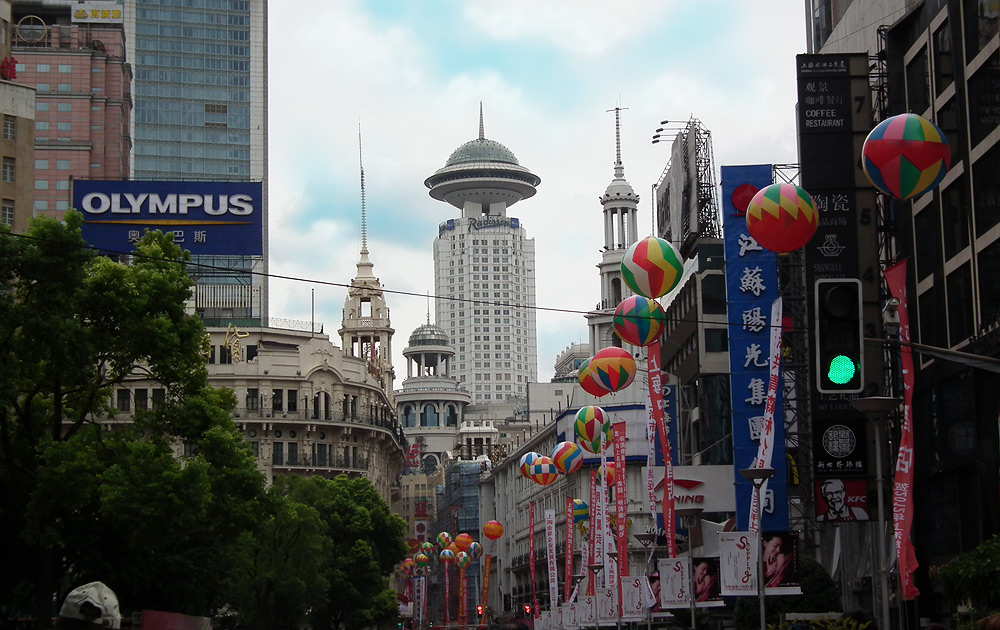| Travel Photos Home Page |
Travel Photos...China, Page One
|
||||
|
To return to the Paintings section of this website, please CLICK HERE
|
|||
|
To view Page Two of the China tour, please CLICK HERE
|
|||
|
In September, 2012, my wife and I travelled to China on a Wendy Wu tour. It was supposed to be a 26 day tour, but on the 12th day my wife damaged her knee (a ruptured Baker's cyst). She was in acute pain and could no longer cope with tour buses et al. I had to wheelchair her home to Sydney using two airlines. That was fun. As the Chinese would say, "May you have an interesting journey".
Before that, we were having a great time. The tour was well organised; the tour guides were excellent; and the other members of the tour group were a lovely bunch of people. It was the very first time that I had been on a tour, and I can certainly recommend Wendy Wu. During the 12 days I did manage to take 1500 photos. Long Live the Digital Revolution! The good news is that my beloved is recovering well, with plenty of rest in Sydney. |
|||
 |
|||
| This is the famous Bund of Shanghai. Bund is an Indian word for waterfront. This quarter of old Shanghai was part of the English Concession, and the Brits built their finest banks and official buildings here.
The area is part of Puxi, meaning the Western bank of the River Pu. |
|||
 |
|||
| The new towers of Shanghai, in Pudong. The River Pu flows through Shanghai. The name Pudong means the East bank of the RIver Pu. Just a few years ago, Pudong was a collection of small villages. The government decided to allow the building of a brand new part of the city here. | |||
 |
|||
| The new Shanghai Museum is well worth a visit. It houses an excellent collection of old Chinese art and artefacts. | |||
 |
|||
| Souzhou is a gorgeous old town, famous for its canals and gardens. It is about an hour's drive from Shanghai (if you are not travelling in peak hour!). | |||
 |
|||
| The famous architect, I. M. Pei, was a native of Souzhou before he left for America as a young man. Pei has designed a number of outstanding structures, like the Pyramid at the Louvre, and the Bank of China building in Hong Kong. He was invited by the Chinese Government to design a new museum in Souzhou.
With the design of this new museum, Pei was attempting to create a modern Chinese architectural idiom, one which would be new but respectful of the old architecture of China. |
|||
 |
|||
| Golden carp in the pond of our hotel in Souzhou. They are a symbol of good fortune. | |||
 |
|||
| The Humble Administrator's Garden in Souzhou. The following is a quote from Wikipedia...
"The garden's site was initially the residence and garden of Lu Guimeng, a Tang Dynasty scholar. Later in the Yuan Dynasty it became monastery garden for the Dahong Temple. In 1513 CE, Wang Xiancheng, an Imperial Envoy and poet of the Ming Dynasty, appropriated the temple. In 1510, he retired to his native home of Suzhou after a long persecution by the East Imperial Secret Service, and began work on the garden. "This garden, meant to express his fine taste, was designed in collaboration with the renowned artist, Suzhou native, and friend, Wen Zhengming. It was as large as today's garden, with numerous trees and pavilions. The garden was named after a verse by Pan Yue's Idler's Prose, "I enjoy a carefree life by planting trees and building my own house...I irrigate my garden and grow vegetables for me to eat...such a life suits a retired official like me well." This verse symbolized Wang's desire to retire from politics and adopt a hermits life in the manner of Tao Yuanming. It took 16 years until 1526 CE to complete." |
|||
 |
|||
| The Humble Administrators Garden, Souzhou. | |||
 |
|||
| A room at the Master of Nets Garden in Souzhou. | |||
 |
|||
| A view of Shanghai, new and old. This was taken near the Yu Gardens. | |||
 |
|||
| A Dragon lives in the Yu Gardens in Shanghai. | |||
 |
|||
| This is a part of the Yu Garden in old Shanghai. It is also called the Garden of Happiness. | |||
 |
|||
| Within the Yu Gardens, we discovered a lovely collection of hand-painted fans on display. | |||
 |
|||
| Not far from Shanghai, the delightful town of Wuzhen is famous for its canals. | |||
 |
|||
| Although I was born in Hong Kong, many moons ago, I was conceived in Shanghai. I can't be sure, but I think that the Noble Deed may have been accomplished in the British Concession, somewhere behind these Temples of Commerce on the Bund. | |||
|
To return to the Paintings section of this website, please CLICK HERE
|
|||
|
To view Page Two of the China tour, please CLICK HERE
|
|||